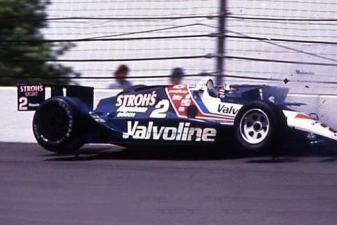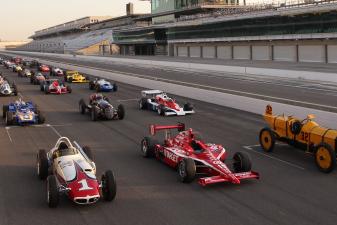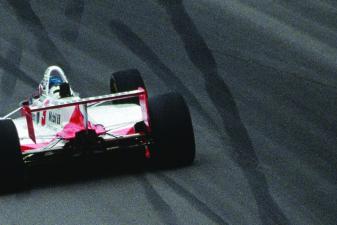In the Red: The Dream of Dale Earnhardt Jr.


Dale Earnhardt’s death is the most prominent moment in NASCAR history, and millions of people around the world know about the tragedy on the final lap of the 2001 Daytona 500. But, only a handful of people know what went on behind the scenes before and after that horrible crash. In the Red is an insider’s look at the 2001 NASCAR season with his son, Dale Earnhardt Jr. In this excerpt from the book, read about Dale Earnhardt Jr's dream to win the Daytona 500.
"I'm going to win the Daytona 500,” Dale Earnhardt Jr. proclaimed. This simple, confident declaration was a delight to the reporters gathered in the room. Pens scratched and clawed while computer keyboards clicked and clacked with urgency. Sometimes headlines write themselves, especially a claim like this from a young man entering his second season in the NASCAR Winston Cup Series.
“I’m pretty confident I’m going to win because I dreamed about it,” he continued, drawing a smattering of laughs from his audience. But no one in the room was more surprised than me, his publicist, as it was the first I had heard of this fantastic dream.
Dale Jr. had them where he wanted, hanging on his every word at the 2001 Winston Cup Preview in Winston-Salem, North Carolina. The annual preseason charitable event is named for the late T. Wayne Robertson, who had been a huge force in the motorsports world as president of Sports Marketing Enterprises, the sports marketing division of R.J. Reynolds Tobacco Company. Starting in 1971, mass infusions of cash from Reynolds’ Winston cigarette brand helped propel the National Association of Stock Car Auto Racing from a regional sport with crimson-necked appeal to a thriving business and entertainment juggernaut throughout the country.
The Winston Cup season was the longest of any professional sports league in the world, running from early February through late November. (Known today as the Sprint Cup Series, it remains so.) Yet race fans still suffer withdrawal symptoms during the few weeks considered to be the offseason. The Preview helps soothe spring fever by allowing race teams and their sponsors to unveil the colorful, logo-filled paint schemes they will carry during the coming season. It’s as if your favorite football team gets new colors and uniforms each fall, and this is your first glimpse.
More importantly, fans have an opportunity to stand in line, often for many hours at a time, to grab a moment and an autograph from their favorite NASCAR drivers. Under significant pressure from NASCAR and Winston executives, each driver is expected to attend, sign autographs, and meet with the motorsports media for a look ahead at the new season.
Earnhardt Jr. and his Budweiser-sponsored team had won three races the previous season, his rookie year in the premier auto racing series in the United States. But the second half of 2000 saw both driver and team falter badly as their youthful confidence began to erode midseason. In his only previous start in the Daytona 500, Junior finished 13th—hardly earth-shattering. Yet, here he was, boldly staking his claim to victory lane at the biggest and richest event in the stock car world. As the son and namesake of seven-time NASCAR champion Dale Earnhardt, he was accustomed to the rapt attention of journalists wherever he went, but this brash prediction was something new for the usually humble, self-effacing 26-year-old.
“You can all call me crazy,” he said, lest anyone think he was joking, “but I’ve dreamed about it so much. I’ll be talking to you at the post-race interview, talking about how I did it. It was so real it’s crazy. I woke up with a lot of confidence that it was going to happen, that it was going to come true, that I was going to win the Daytona 500.
“I was out in front all day,” he continued. “I remember I kept telling myself I won it in my second try. That’s why I’m convinced.”
“Where was your dad in the dream?” someone asked. Dale Jr. paused slightly.
“He wasn’t there.”








